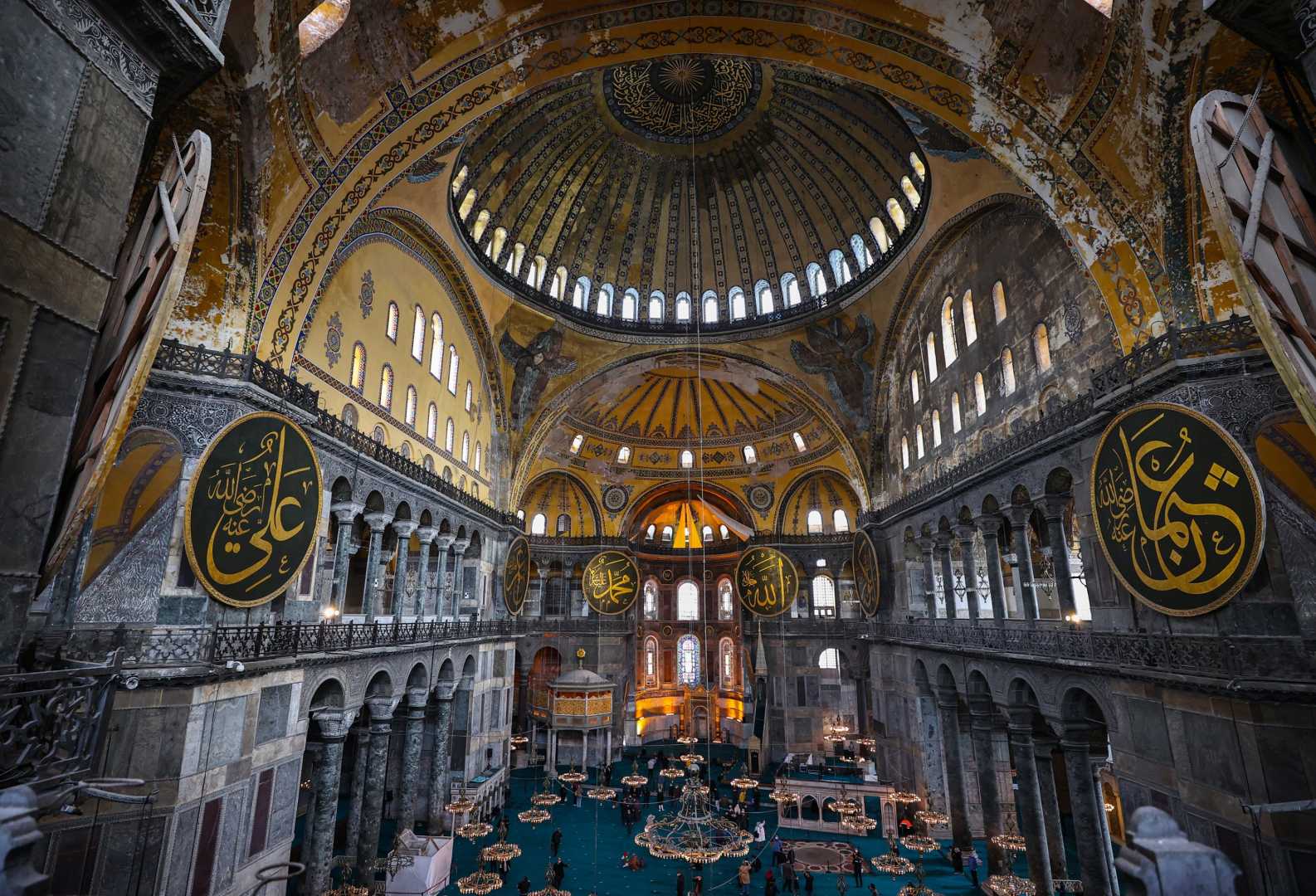World
Hagia Sophia Undergoes Major Restoration Amid Controversy

Istanbul, Turkey — Hagia Sophia, a majestic structure originally built as a church in 537 CE, has been the center of cultural and religious transformations for nearly 1,500 years. Now, the site is undergoing a significant restoration project to enhance its earthquake resilience, starting in April 2025.
The building, which was converted into a mosque in 2020 after serving as a museum for decades, stands as a testament to the architectural prowess of the Byzantine Empire. Designed under the orders of Emperor Justinian I, its vast interior and stunning mosaics create a spiritual atmosphere that draws millions of visitors each year.
Hagia Sophia’s rich history includes its use as a Christian church, a mosque during the Ottoman Empire, and most recently, a museum after Turkey became a secular state in the early 20th century. However, the 2020 decision to revert it back to a mosque sparked debates among religious and political leaders globally, including within the United Nations and the Vatican.
During the restoration, visitors will still be able to view the iconic Byzantine mosaics while adhering to a new entry fee of 25 euros instituted in 2024. Despite the controversies, preservation efforts aim to maintain the structural integrity and historical significance of this UNESCO World Heritage site.
Historical accounts reveal that Justinian aimed to surpass the grandeur of the Temple of Solomon in the construction of Hagia Sophia. The building has survived numerous adversities, including natural disasters and political upheaval, largely due to its solid foundation and the efforts of historical figures who valued its preservation.
A historian, Sedat Bornovalı, suggests that the building’s financing might have included taxes levied on Justinian’s political opponents after the devastating Nika Revolt, demonstrating the complex intersection of power and architecture in ancient times.
As the restoration work progresses over the next three years, localized discussions continue about Hagia Sophia’s role as a mosque versus a museum. Some argue for its continuation as a house of worship, while others advocate returning it to its status as a cultural site open to all.
Regardless of its role, Hagia Sophia remains a captivating landmark, embodying a mix of history, faith, and art that has captivated countless visitors throughout the centuries.












